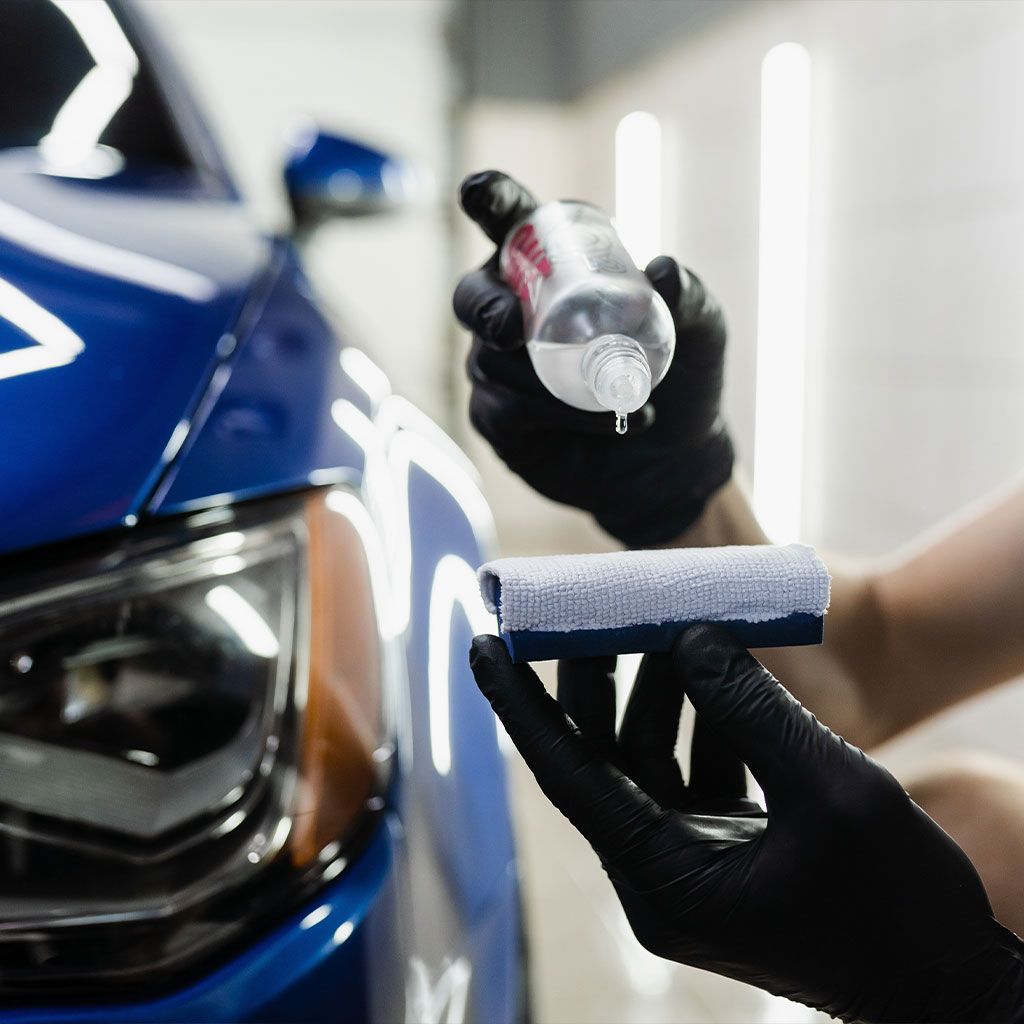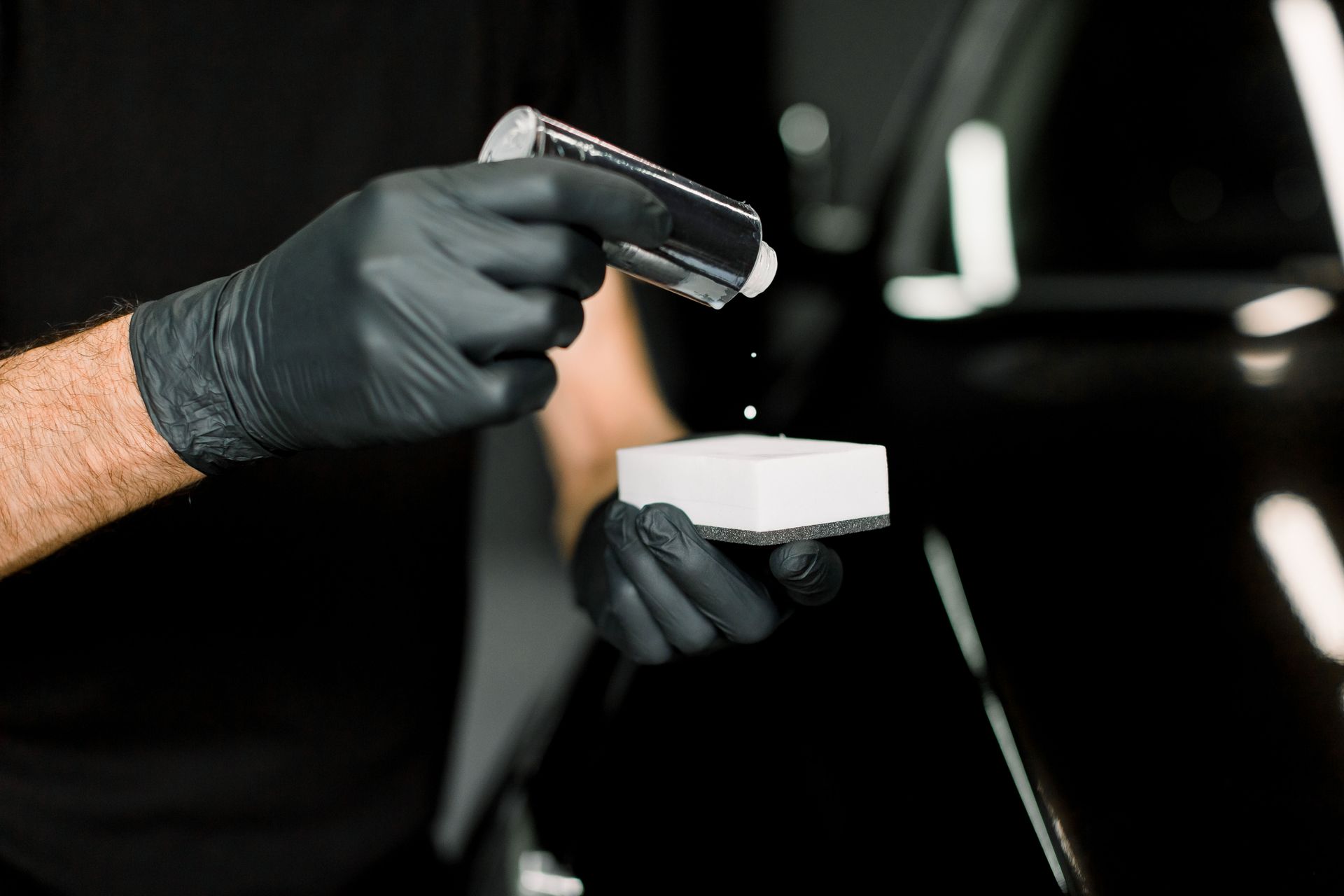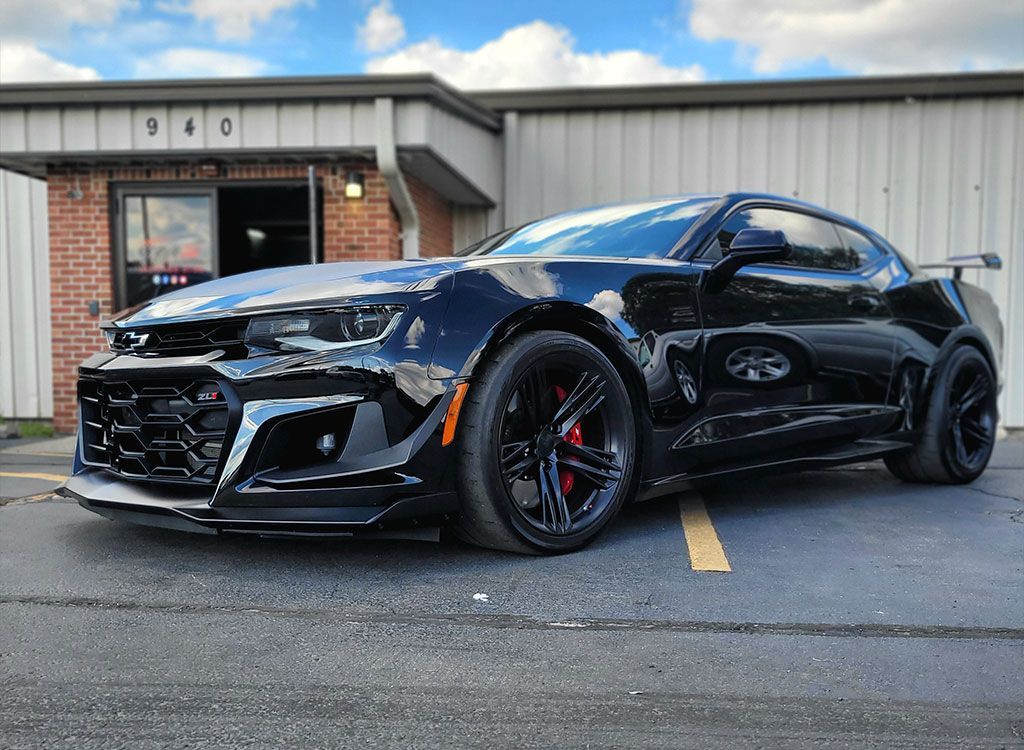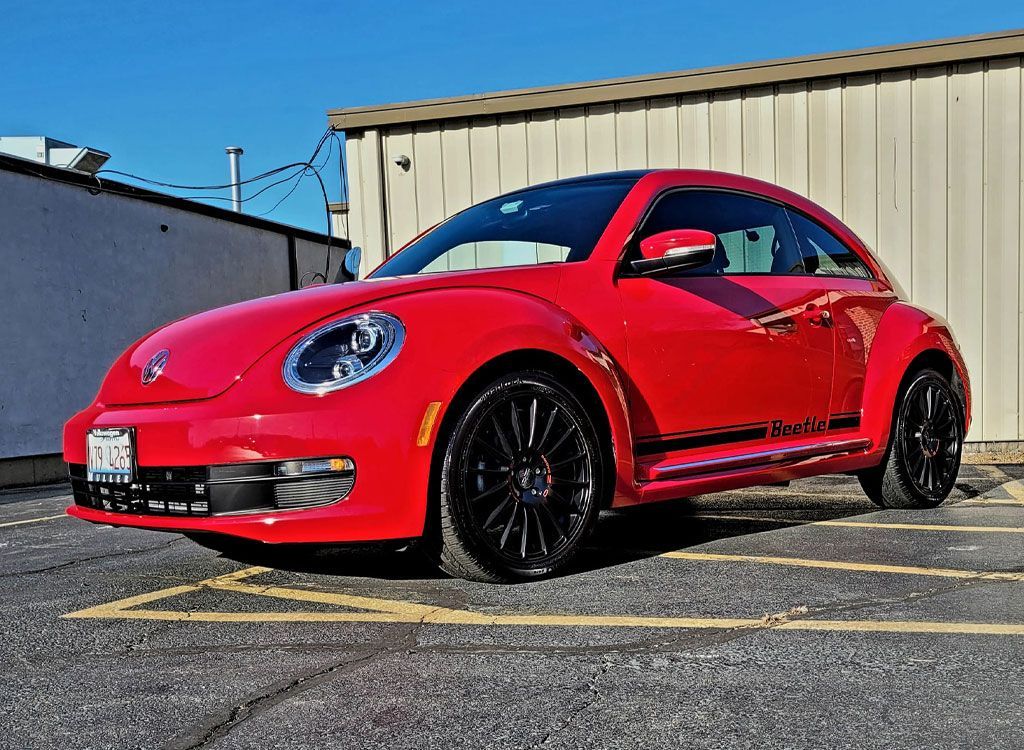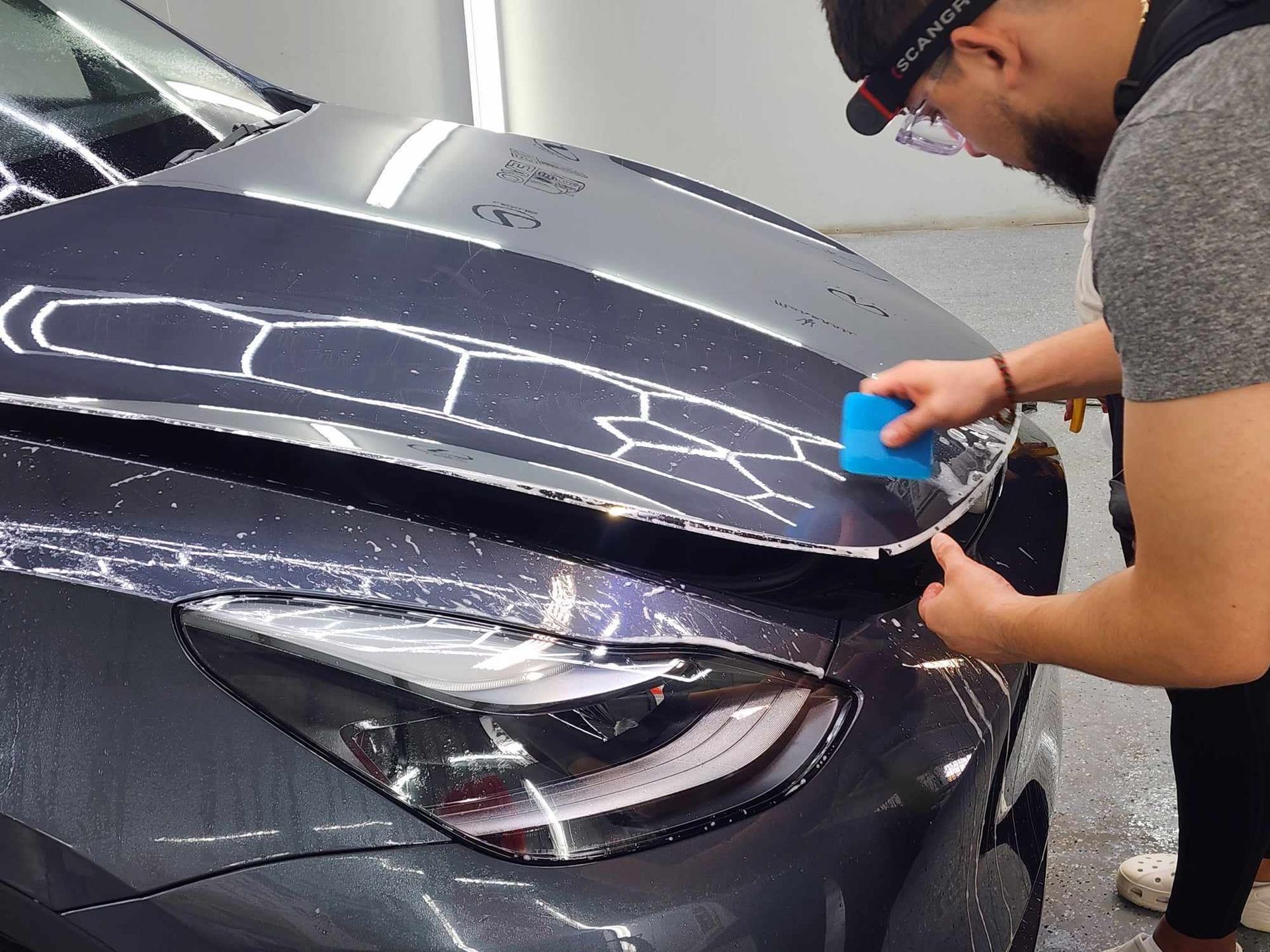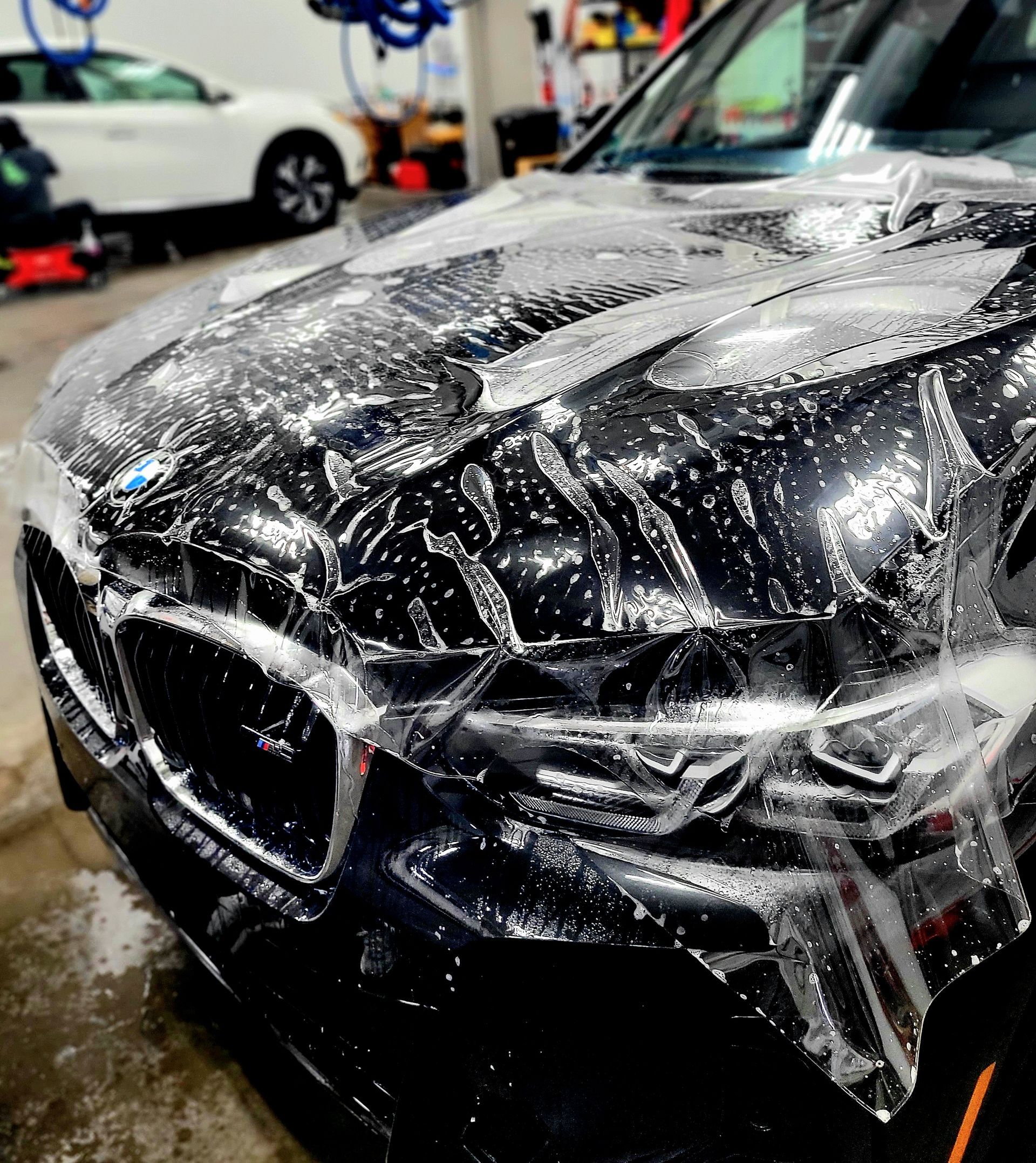How Ceramic Coating Cuts Down on Frequent Car Washes: The Ultimate Protection for Your Vehicle
When it comes to keeping your car looking sharp, frequent washes can feel like a never-ending chore. Many car owners find themselves spending their weekends scrubbing away grime, only to have dirt and dust settle in again almost immediately. But what if there was a way to change this routine drastically? Enter ceramic coating—a technology that not only enhances your vehicle's shine but also reduces the need for those exhausting washing sessions. With its unique properties designed to repel dirt and water, ceramic coating can transform your car care experience from tedious to effortless. Let's explore how this innovative solution works and why so many vehicle enthusiasts are making the switch.
Understanding How Ceramic Coating Works
Ceramic coating is more than just a shiny surface on your vehicle; it represents a technological advancement in automotive care. When this liquid polymer is applied, it doesn't simply layer over the paint but rather penetrates into the microscopic pores of the factory coating. This unique approach creates a strong chemical bond that forms a rigid shield capable of withstanding various external stressors. The hydrophobic properties of ceramic coating are among its most remarkable features. By repelling water, the coating ensures that rainwater beads up and rolls off the vehicle's surface. This phenomenon not only helps maintain a cleaner exterior but is also vital in preventing dirt and grime from sticking around. When raindrops roll away, they take particles of dirt along with them, keeping your car cleaner for longer periods between washes.
Traditional waxes can wear off within weeks, especially after repeated washes or exposure to harsh environmental conditions like UV rays or acid rain. In contrast, well-applied ceramic coatings can last anywhere from two to five years, creating a long-term defense mechanism for your car's paint. Additionally, ceramic coatings offer chemical resistance. Spilled substances like bird droppings or tree sap can damage unprotected paint. However, because of the ceramic coating's thick barrier, the paint underneath is much less susceptible to damage from these materials. When cleaning up such messes becomes necessary, owners will find it much easier, as these contaminants are more likely to wipe away effortlessly. Understanding how ceramic coating works equips vehicle owners with knowledge about their investment while preparing them for proper maintenance practices. The initial application requires careful preparation; any imperfections in the paintwork could hinder bonding with the coating, ultimately reducing its effectiveness.
Comparing Ceramic Coating to Traditional Waxing
When it comes to protecting your vehicle's paintwork, traditional waxing and ceramic coating each have their own unique advantages. However, they fundamentally differ in how long they last and how much care they require. Traditional waxes typically provide a temporary barrier against environmental elements, lasting only a few months at best. This means car owners need to schedule regular waxing sessions—every two to three months—just to keep their vehicles looking pristine. On the other hand, ceramic coatings form a durable bond with the paint and can provide protection that lasts anywhere from two to five years when maintained properly.
One reason many car enthusiasts gravitate toward ceramic coatings is due to their low maintenance requirements. Once applied, these coatings require minimal upkeep compared to traditional wax finishes. You might find yourself washing your car every six months instead of every few weeks—a considerable time-saving aspect for busy lives. While traditional wax may give your car a beautiful shine initially, over time, frequent washes or harsh weather can wear it down more rapidly than you'd like. Ceramic coatings typically range from $500 to $2,500 for professional applications. While you may face higher costs upfront with ceramic coatings, the long-term value is remarkable. Reduced cleaning frequency not only conserves water but also saves you money on washing services and products over time. Maintaining the integrity of your paint reduces the likelihood of costly repairs down the road from stains that would be difficult to remove without damaging the surface. Selecting between ceramic coating and traditional waxing boils down to individual preferences and lifestyle needs. If you desire enhanced durability, reduced maintenance effort, and significant long-term benefits despite a heftier initial investment, then ceramic coating becomes the clear winner in numerous instances.
Significant Time-Saving Benefits
One of the most celebrated advantages of ceramic coating is the noteworthy reduction in time spent on regular car maintenance. A ceramic-coated car may require washing considerably less frequently than its non-coated counterpart. Imagine transforming your weekly washing ritual—which often consumes an entire afternoon—into just a brief dust-off every month. This means less scrubbing and drying and, more importantly, more time for you—whether that's relaxing with family or pursuing hobbies. Picture this scenario: you used to set aside Saturday mornings for a thorough wash, which involved not only the washing but also drying, waxing, and then wondering whether your efforts would survive even the first rain droplets. Now, with ceramic coating, you can enjoy a leisurely brunch instead. Just grab a hose or a soft cloth and a bucket, give your car a gentle rinse or wipe down, and you're done. The smooth surface makes it so that dirt and grime don't cling; they slip right off.
Beyond just sheer time savings, consider the physical effort involved in washing an uncoated vehicle. You're talking about scrubbing away dust, grime, road salt, and other contaminants—a tiring task after working all week. With a ceramic coating's hydrophobic properties, water beads up and flows off easily. This ease of cleaning means less elbow grease is needed when maintaining your vehicle; light dust simply washes away rather than requiring vigorous scrubbing. The implications are even clearer when you look at what this means over time: if you're saving significant hours per year just from decreased wash frequency alone, that time can be used for things you truly enjoy. Plus, with fewer products needed—no waxes or sealants reapplication—you can save both time and money as well. These changes translate into enhanced convenience in your life.
Hydrophobic Properties and Surface Protection
The hydrophobic properties of ceramic coatings offer an incredible transformation for any vehicle's exterior. When applied, these coatings create a surface that causes water to bead and roll off, meaning dirt and grime are less likely to stick. Imagine driving through a rainstorm; rather than ending up with streaks or unsightly spots as water pools on your vehicle, you'll notice how it largely stays clean. This effect isn't just for looks—it's a game changer for long-term maintenance. This beading action prevents contaminants from adhering to the paint surface. For instance, when bird droppings, tree sap, or bug splatters hit the coated surface, they have a harder time sticking and usually wash away with just a light rinse. The protective layer effectively acts like a shield against these potential stains, giving you peace of mind on your travels. By creating this barrier, ceramic coatings provide not only aesthetic benefits but significant structural ones as well.
The smooth finish reduces friction between debris and paint, making it easier to wipe away messes without harsh scrubbing that could damage the underlying surface. This protective layer doesn't just resist dirt; it actually enhances the longevity of your vehicle's paint job by minimizing wear and tear. Vehicles treated with ceramic coatings can see substantial reductions in dirt accumulation compared to untreated surfaces. This implies that your car remains cleaner for longer periods, reducing the frequency in which you need to wash it. This combination of hydrophobic properties and surface protection not only leads to easier cleaning but also plays a crucial role in preserving your car's value over time. The initial investment in such protective measures can yield significant financial benefits down the road.
Cost Considerations and Long-Term Savings
While the upfront price for a high-quality ceramic coating may seem substantial, many vehicle owners find that their investment pays dividends over time. One major factor to consider is the reduction in car washes. With ceramic coating, you'll likely see your wash frequency drop significantly. Those trips to the car wash become less necessary when the surface of your car effectively repels dirt and grime. Beyond just cutting back on wash frequency, maintaining your car's exterior with ceramic coating means you preserve its paint condition better than any traditional wax or sealant ever could. The protective layer shields against UV rays, weather elements, and environmental damage, ultimately extending your vehicle's overall lifespan when it comes to appearance. Consequently, this preservation enhances your driving experience and protects your investment. If you decide to sell in the future, a well-maintained vehicle with vibrant color and shine will certainly entice potential buyers.
In practical terms, if you reduce car washes from twice a month to once every couple of months due to ceramic coating's hydrophobic properties, that's a substantial savings on both cleaning supplies and services over time. Consider the costs of DIY wash supplies and professional detail services—these expenses accumulate rapidly when you're consistently keeping your vehicle clean without the benefits of ceramic protection. Furthermore, we cannot overlook the durability aspect of ceramic coatings, which typically last two to five years depending on usage and maintenance routine. Compared to waxing—often requiring reapplication every few months—the superior longevity of ceramic coatings translates into fewer expenses associated with labor and materials over time. While investing in a ceramic coat might feel burdensome initially, considering its long-term financial benefits creates a clearer picture—one where savings pile up as washing reduces and paint integrity improves.
Application Tips and Considerations
Proper application of ceramic coating requires a careful approach, as well as an understanding of environmental conditions and necessary equipment for successful results. Think of it as preparing a canvas for a masterpiece—the better the preparation, the more stunning the final product.
- Surface Preparation: The first step is ensuring that your car's surface is entirely clean and devoid of contaminants. Ensuring that the car's paint is spotless can be effectively accomplished using a clay bar treatment. This technique gently removes embedded particles, allowing the ceramic coating to adhere flawlessly to the paint without any unwanted blemishes.
- Polishing: Buffing and polishing cannot be overlooked. Any imperfections on your vehicle's surface should be addressed prior to applying ceramic coating. If you were to cover a beautiful painting with a clear coat, any flaws could ruin the entire aesthetic you aimed to achieve. Therefore, employ polishing techniques that eliminate imperfections so the finish is pristine; otherwise, the ceramic layer might lock them in, severely diminishing its visual impact.
- Application Process: Applying the ceramic coating itself requires diligence and precision. Apply the coating in small sections using a high-quality microfiber cloth. Ensuring even coverage is essential; if you rush it or apply too much pressure, you may end up with streaks or uneven patches that defeat the purpose of perfectly protective coverage. Slow and steady wins the race when it comes to achieving an even finish.
- Curing Time: Curing time is where patience pays off immensely. Depending on your chosen ceramic coating product, curing can take anywhere from several hours to a couple of days. During this critical period, keeping your vehicle in a dust-free environment is paramount because particles can easily settle onto wet coatings and ruin your hard work. Keeping conditions ideal allows for optimal bonding between the ceramic layer and your car's paint.
By following these meticulous steps, you'll ensure not just an aesthetically pleasing finish but also enhanced durability and longevity against environmental elements.
Is Ceramic Coating Right for Your Vehicle?
Deciding to invest in a ceramic coating isn't just about wanting shiny paint; it hinges on several factors tied to how you use your vehicle and its value. If you own a high-value car, ceramic coating could be ideal for you. High-value vehicles often withstand harsher environments and demand better care to maintain their aesthetic and monetary value. The local climate plays an integral role too. Cars parked in areas with severe weather conditions—like aggressive sun or salty sea air—face more challenges than those sheltered by forgiving climates. In such cases, a ceramic coating acts as a shield, resisting fading and corrosion while keeping dirt buildup to a minimum. Those extra layers prevent grime from sticking and repel contaminants that can lead to unsightly wear and tear over time. Being proactive with protection can save you significant money in the long run.
However, there's still some consideration worth mentioning: while ceramic coatings offer substantial benefits, they aren't the only route for less valuable or older vehicles. Some might argue that frequent waxing is an adequate substitute because it provides protection too—but the labor involved with consistently applying wax requires regular commitment, which can feel like a chore given busy life schedules. On the flip side, once you've invested the time and effort into a ceramic coating, a strong application can last several years, and your vehicle will look polished with minimal maintenance. When weighing your options, consider elements like car value and typical usage. If your situation aligns with one where protection matters—from harsh weather to frequent commuting—you may find that ceramic coating pays off handsomely in terms of both aesthetics and peace of mind. Understanding both sides equips you with the necessary insights to make informed decisions tailored to your unique situation when considering ceramic coatings for your vehicle. In the end, making an informed choice about ceramic coating can lead to both long-term savings and sustained beauty for your car. Embrace this smart investment for the unparalleled protection it offers.
Top-Notch Ceramic Coating Services in Elgin, IL
Give your vehicle the long-term protection and deep gloss it deserves with
professional ceramic coating services
in Elgin, IL. Engineered for durability, this advanced coating repels dirt, grime, and water while keeping your paint shining like new. The specialists at CM3 Detailing Studio & Ceramic Coating apply every layer with meticulous attention to detail, ensuring lasting beauty and performance. Drive confidently knowing your car’s finish is protected by the experts—contact us today to schedule your ceramic coating service!

